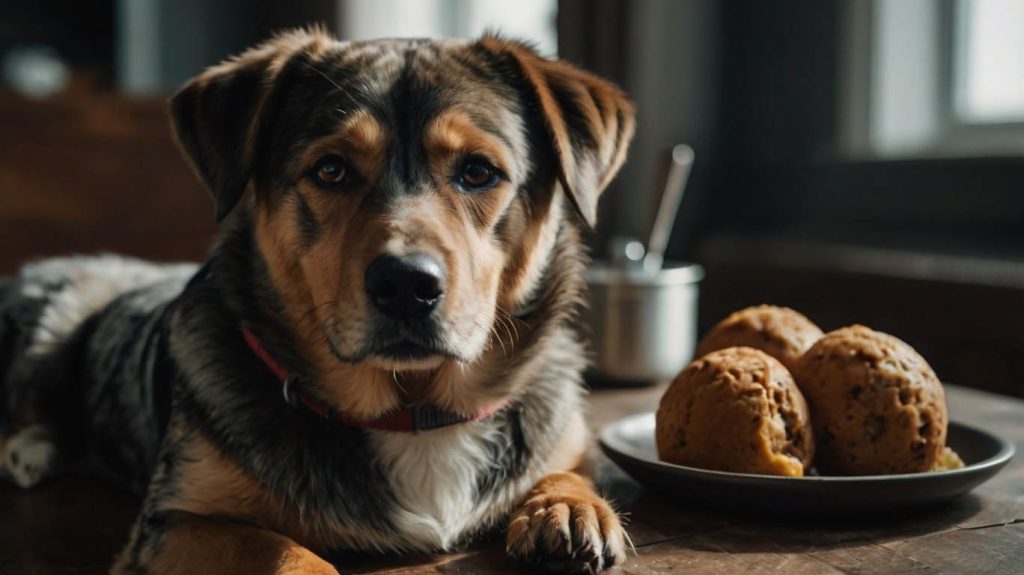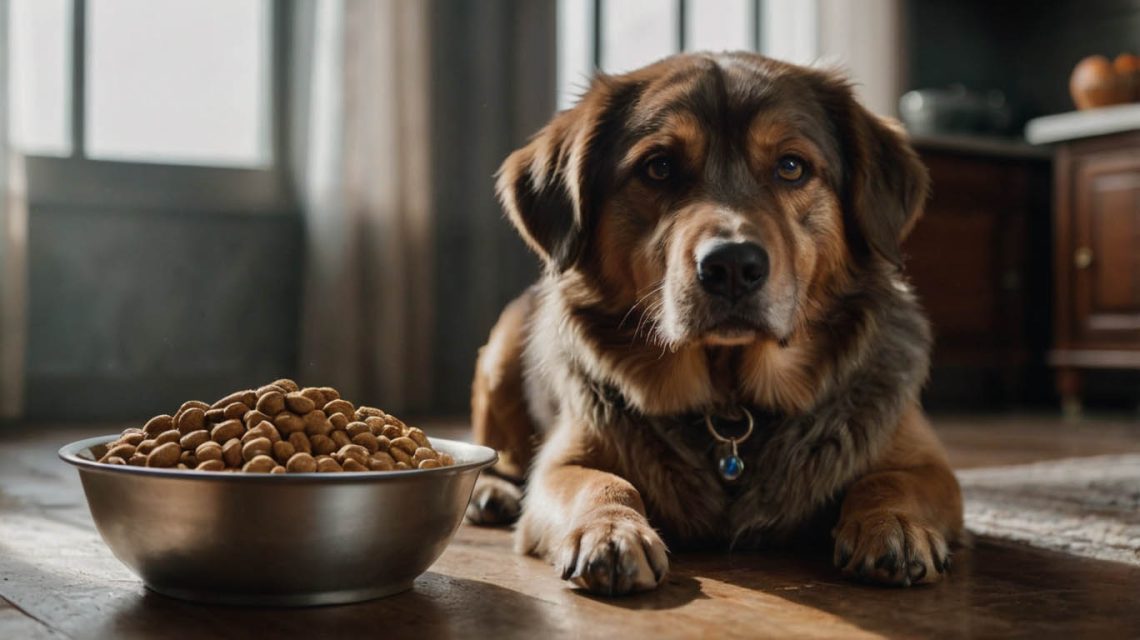How to Make a Dog Gain Weight Fast: A Safe and Healthy Guide
Seeing your dog looking too thin, with their ribs and spine more prominent than they should be, can be a deeply worrying experience. The story often starts with a growing concern that leads you to search for answers on how to make a dog gain weight fast. While the urgency is understandable, it is absolutely critical to approach this challenge with a focus on safety and health, not just speed. Rapid, unhealthy weight gain can cause more problems than it solves.
This comprehensive guide will walk you through the entire journey of helping your dog achieve a healthy weight. First, we will uncover the essential first step: understanding why your dog is underweight. Then, we will explore a safe, multi-faceted action plan involving diet, feeding strategies, and professional guidance. Consequently, you will be empowered to help your dog regain their strength and vitality in the healthiest way possible.
⚠️ IMPORTANT VETERINARY ADVISORY: READ THIS FIRST ⚠️
Unexplained weight loss is a serious medical sign. Before you change a single thing about your dog’s diet, your first and most critical step is to schedule a thorough examination with your veterinarian. Attempting to address weight loss without a proper diagnosis can be dangerous and may mask a serious underlying health condition. This guide is designed to be used after and in partnership with your veterinarian.

The “Why”: The First Step in How to Make a Dog Gain Weight Fast
First and foremost, before you can create an effective plan, you must identify the root cause of the weight loss. Your veterinarian will help you investigate these common culprits.
Ruling Out Underlying Medical Conditions
Numerous health issues can cause a dog to be underweight.
- Parasites: Intestinal worms like roundworms, hookworms, and tapeworms are a very common cause of weight loss, as they steal nutrients from your dog’s system.
- Dental Disease: Painful teeth or gums can make it difficult for a dog to eat, leading to a decreased appetite and subsequent weight loss.
- Gastrointestinal (GI) Disorders: Conditions like inflammatory bowel disease (IBD) or exocrine pancreatic insufficiency (EPI) can prevent your dog from properly absorbing nutrients from their food.
- Metabolic Diseases: Other serious illnesses, including diabetes, thyroid problems, and even cancer, often have weight loss as a primary symptom.
Assessing Behavioral and Environmental Factors
If your dog has a clean bill of health, the cause may be environmental or psychological.
- Stress and Anxiety: A recent move, a new pet in the home, or other significant environmental changes can cause stress that leads to a decreased appetite.
- Picky Eating: Some dogs are naturally more selective. However, as we explore in our guide on [What to Feed a Picky Dog], this can often be managed with behavioral strategies.
- Competition in Multi-Dog Households: A more timid dog may be getting pushed away from the food bowl by a more assertive housemate.

The Action Plan: How to Make a Dog Gain Weight Fast and Safely
Once you have a veterinary diagnosis and a clear understanding of the cause, you can implement a safe and effective weight-gain strategy. The goal is a gradual, healthy increase of about 1-2% of their body weight per week.
Choosing the Right Food to Help Your Dog Gain Weight
Not all calories are created equal. The key is to choose a high-quality, calorically dense food.
- Look for Higher Protein and Fat Content: A crucial part of how to make a dog gain weight fast is providing the right fuel. Look for a high-performance or “active” dog food formula. These are specifically designed with higher percentages of protein (to rebuild muscle mass) and fat (for concentrated calories). Aim for a food with at least 30% protein and 20% fat.
- Consider Puppy Food: High-quality puppy formulas are packed with the extra calories, protein, and nutrients needed for growth, making them an excellent, often vet-recommended option for underweight adult dogs.
- Switch to a High-Quality Wet Food: Canned or wet food is often more palatable and aromatic than dry kibble, which can be a game-changer for a dog with a low appetite. It also has the added benefit of increasing their hydration.
Always ensure the food you choose meets the nutritional standards set by the Association of American Feed Control Officials (AAFCO).
Strategic Feeding: How You Feed is as Important as What You Feed
Changing your feeding routine can make a significant difference.
- Increase the Number of Meals: Instead of one or two large meals, try feeding your dog three or four smaller meals throughout the day. This can be easier on their digestive system and may encourage them to eat more overall. This is a simple but effective strategy for how to make a dog gain weight fast.
- Add Healthy, High-Calorie Toppers: Enhance their regular meals with a spoonful of a healthy, calorie-dense food. Great options include:
- Plain, cooked sweet potato or pumpkin puree.
- A small amount of plain, full-fat cottage cheese or Greek yogurt.
- A spoonful of high-quality canned dog food mixed into their kibble.
Safe Supplements and Additions to Make a Dog Gain Weight Fast
Certain supplements can provide a concentrated calorie boost, but you must discuss these with your veterinarian before use.
- High-Calorie Gels or Powders: Your vet or local pet store can recommend commercially available supplements designed for weight gain.
- Fish Oil: While not a primary weight-gain tool, the omega-3 fatty acids in fish oil can improve appetite and have anti-inflammatory benefits.
What to Avoid in Your Quest to Make a Dog Gain Weight Fast
It’s tempting to reach for anything that might add pounds, but some methods can do more harm than good.
- Don’t Load Up on Unhealthy Fats and Fillers: Avoid giving your dog greasy table scraps or low-quality foods. This can lead to pancreatitis, a painful and potentially fatal inflammation of the pancreas.
- Don’t “Free-Feed”: Leaving food out all day can make it difficult to track your dog’s intake and can lead to picky eating habits. Stick to a structured meal schedule.
- Don’t Overdo It: Remember, the goal is a healthy, gradual gain. Rapid weight gain can put a strain on their joints and organs.
Conclusion: A Journey of Health, Not Just Haste
The journey of how to make a dog gain weight fast must be guided by the principles of safety, health, and patience. It begins with a crucial partnership with your veterinarian to diagnose the underlying cause. From there, a carefully planned diet of high-quality, calorically dense food, combined with a strategic feeding schedule, will set your dog on the path to recovery. By focusing on their overall well-being, you can help them safely regain their strength, vitality, and a healthy, happy weight.


